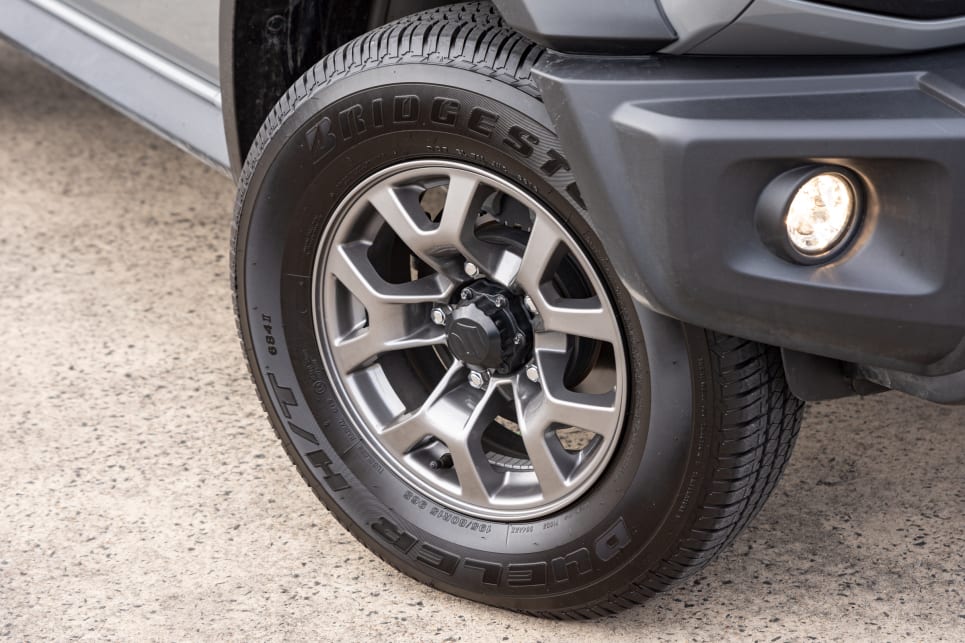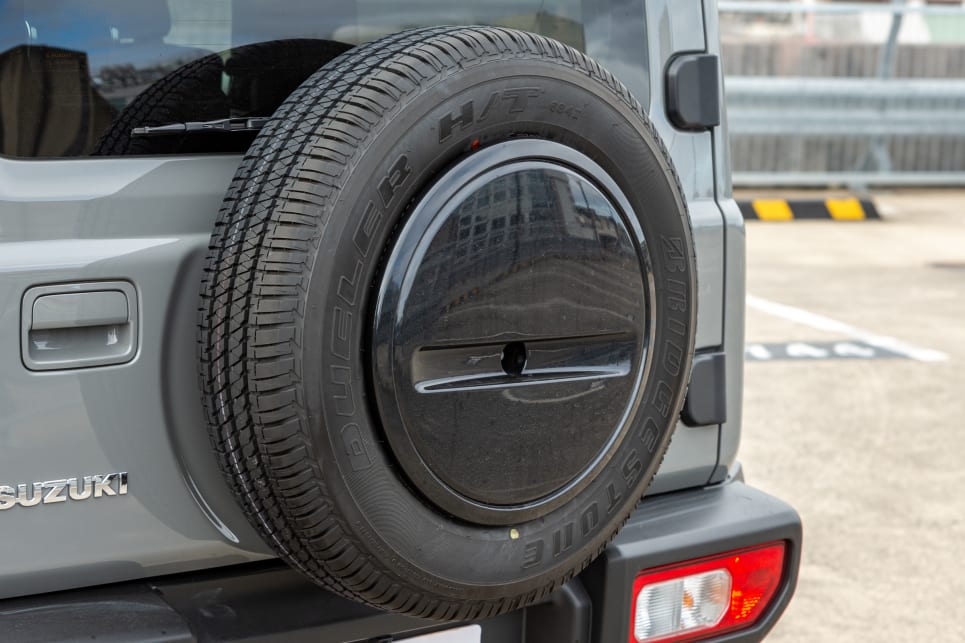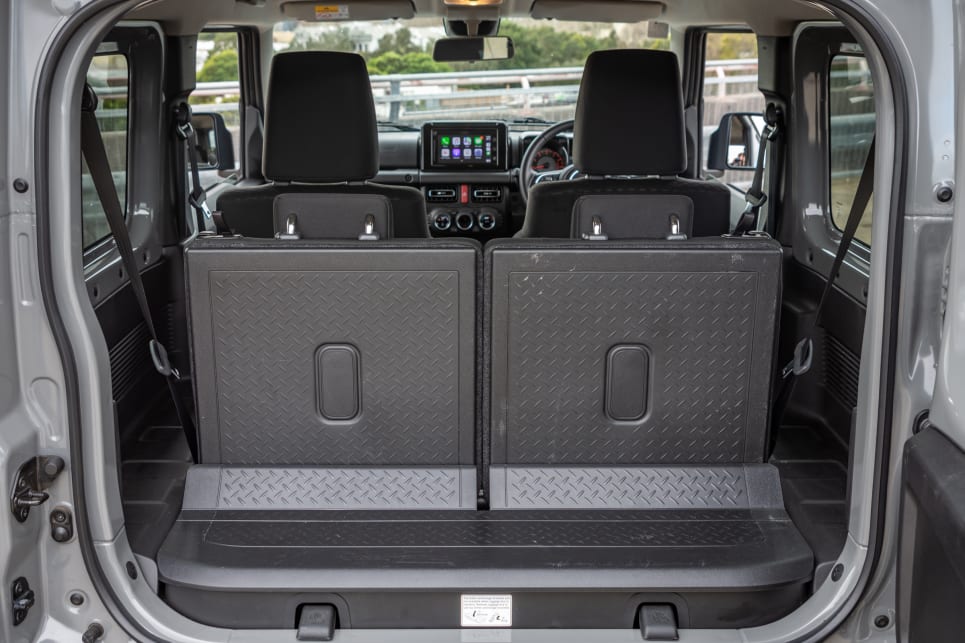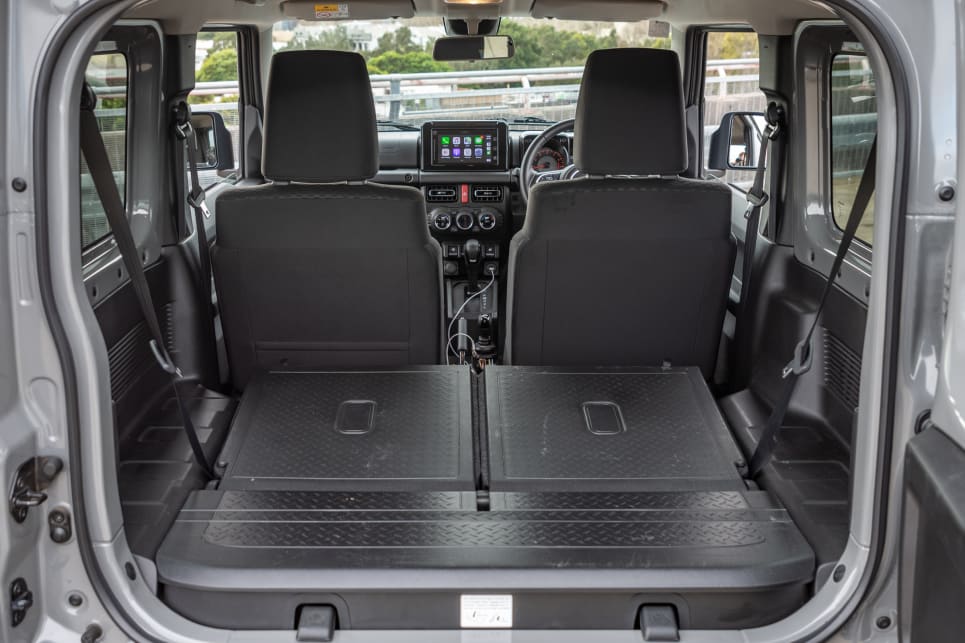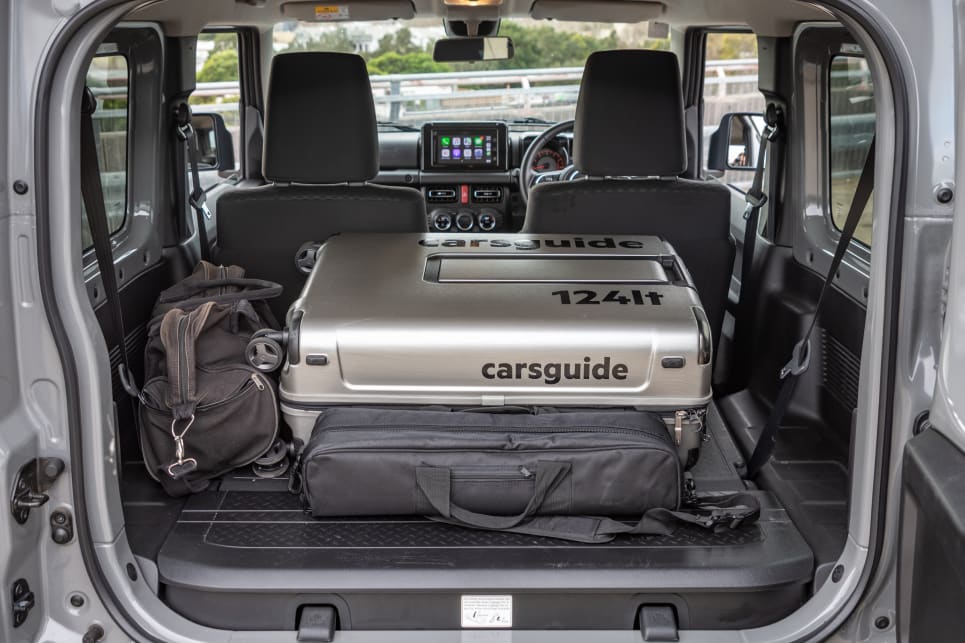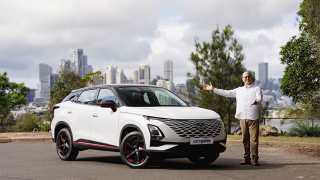Given the Jimny's unique character, it’s hard to argue with its budget price-point. At an MSRP of $27,990 for the priciest automatic version (as tested here), it’s not even really expensive for its size-bracket. To get something which looks and feels like this, your next port of call is the Jeep Wrangler at a whopping $59,450.
Makes sense the Jimny is flying off the shelves, then.
Standard fitment isn’t too bad. Almost everything from the Swift hatchback is not only included but looks about the same, with familiar gear appearing in the form of a 7.0-inch multimedia touchscreen with Apple CarPlay and Android Auto support, as well as built-in navigation.

On the outside there are retro-inspired 15-inch alloy wheels in 'gunmetal', retro-inspired round headlights, and a straight-up retro full-size spare bolted to the rear door.
Other notable features include single-zone climate control, privacy glass, a small function screen nestled in the instrument cluster, a reversing camera, and of course, a low-range transfer case with H4 and L4 modes.
Options are limited to premium paints at $500 which can also be two-tone with a contrast roof for $1250.
There are some active safety features, although the Jimny misses out on a high score. More on that later.





